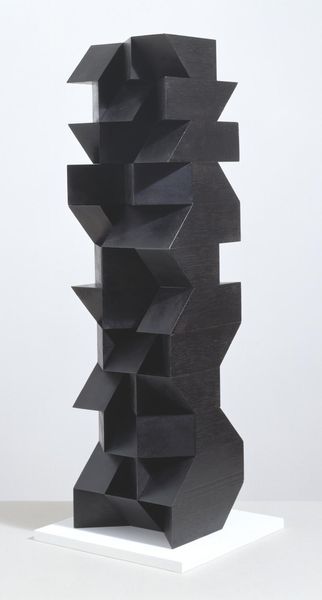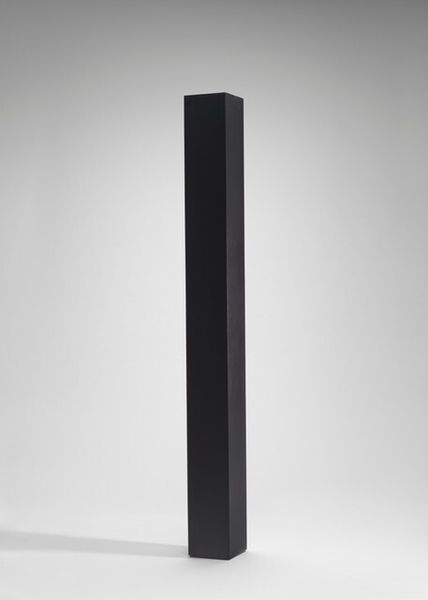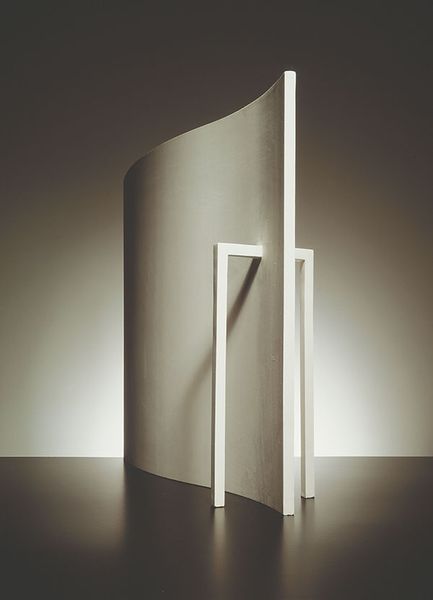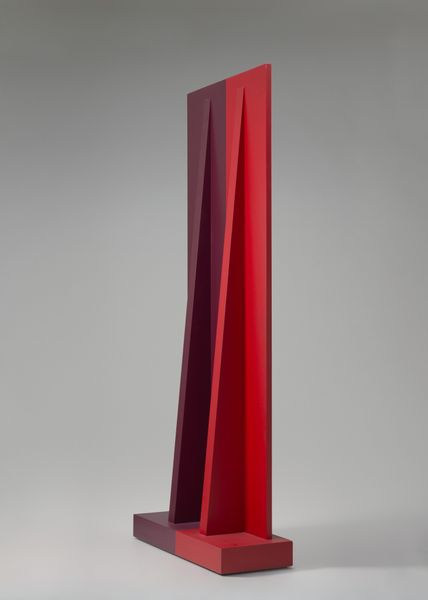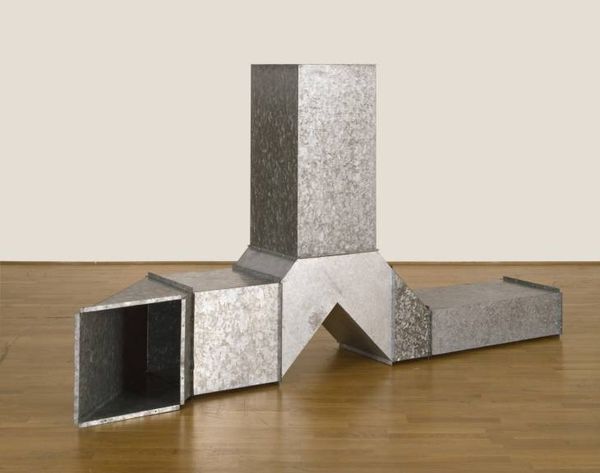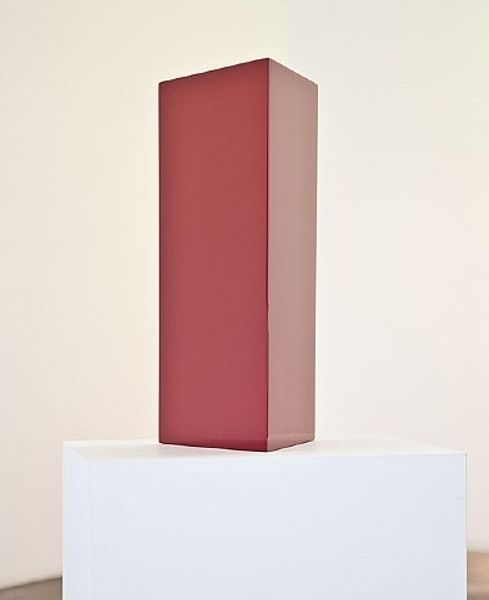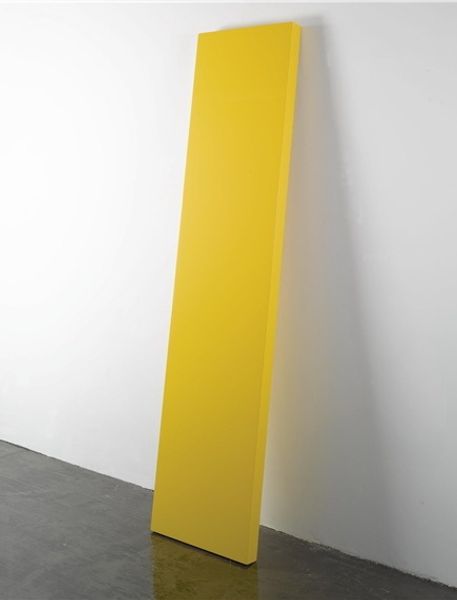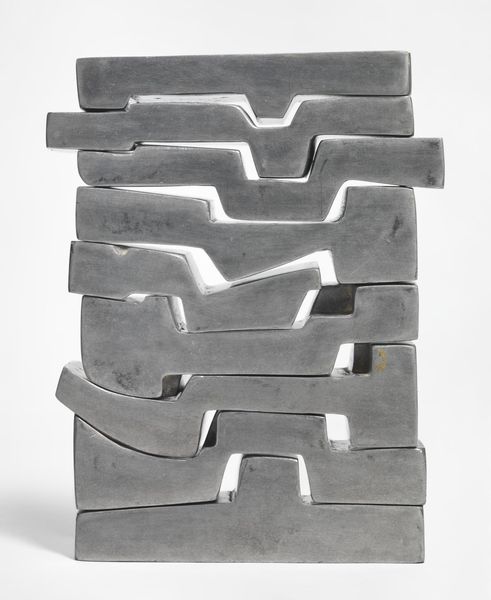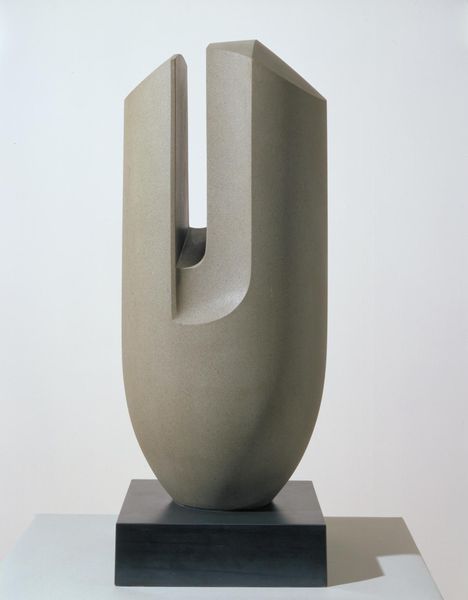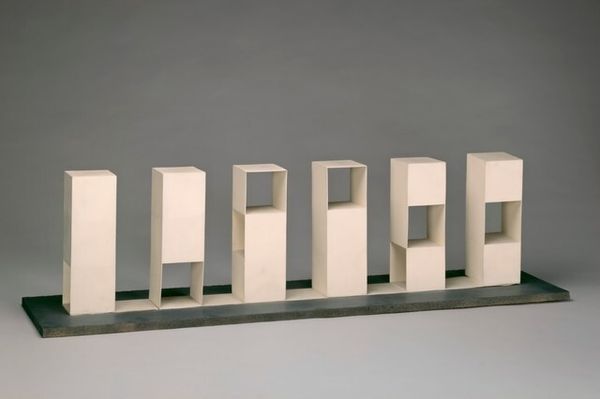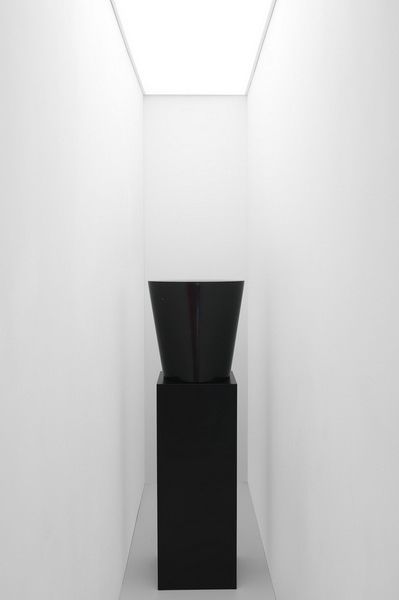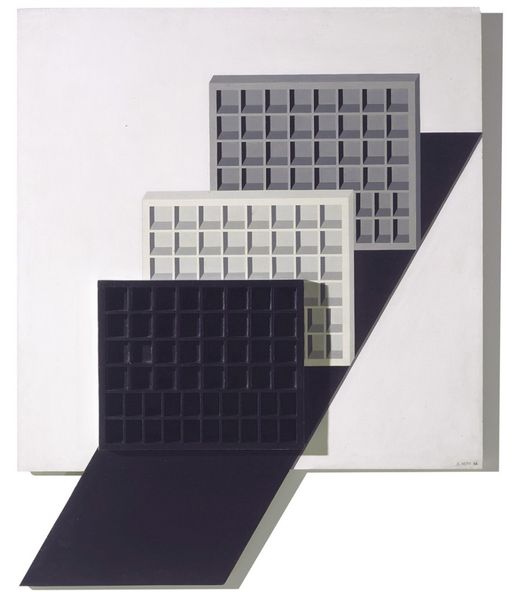
sculpture
#
contemporary
#
sculpture
#
land-art
#
geometric
#
sculpture
#
modernism
Copyright: Karl Prantl,Fair Use
Curator: This is "Sieben Anrufungen" by Karl Prantl, created in 1992. Prantl, associated with Land Art and Modernism, sculpted this piece. What's your initial response? Editor: My immediate reaction is one of solemnity, perhaps even a touch of foreboding. The stark, monolithic form against the pastoral landscape creates a striking contrast, like a silent sentinel guarding the field. Curator: Precisely. The verticality is key here. Notice how the sequence of seven circular indentations are evenly spaced—a visual rhythm emphasizing the work’s overall geometry. The artist focuses on elemental forms to convey meaning. Editor: Yes, and that rigid geometry against nature makes me consider its social implications. This feels like a commentary on how humans impose order on the natural world, dominating it. The “seven invocations” feel like a repeated act of control. What or whom are they invoking, and to what end? Curator: Interesting. I see those indentations more abstractly, almost like musical notes on a staff, implying harmony, a resonance with the surroundings, though I admit the darkness of the stone might initially give pause. Editor: Perhaps a disrupted harmony. Invocations are powerful acts, aren't they? They carry intention. Prantl, by placing this weighty stone structure—a testament to industrial processes—in a field, juxtaposes agricultural land with a clear demonstration of human intervention. How sustainable are these acts of invoking when the land gives all? Curator: The juxtaposition is undeniably powerful, setting up a dialogue between nature's organic forms and the geometric structure imposed by Prantl. The surface texture too, warrants attention, showing evidence of its carving to retain tactility, avoiding being smoothed and sanitized of artistic process. Editor: This reminds me that sculptures, like architecture, affect social agency. The way public sculptures create an open and inviting space is being undermined by Prantl in favour of monumentality. A kind of brutal memorialisation, without ever giving an account. Curator: On reflection, its very immobility also creates that connection. An object made from the Earth returns to it—integrating site specificity with modernist forms in very powerful visual terms. Editor: Ultimately, this forces me to see how monuments like this continue a historical lineage of art serving power, subtly reminding us that seemingly neutral forms carry weighty social baggage.
Comments
No comments
Be the first to comment and join the conversation on the ultimate creative platform.
